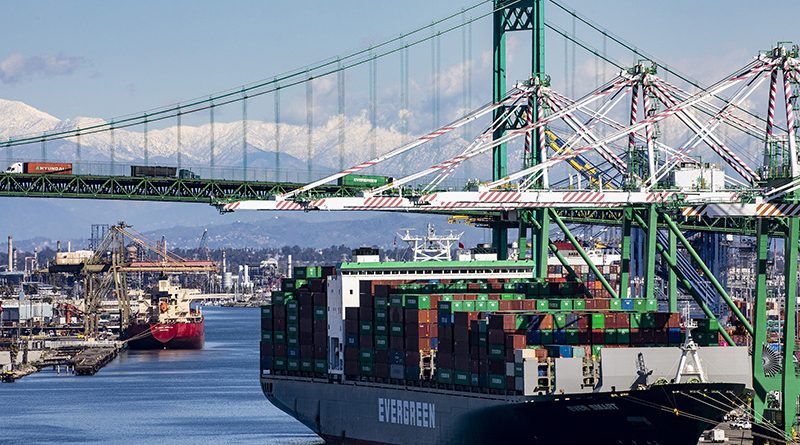Fast Facts: The Port of Los Angeles: A Gateway to Global Trade
Located in San Pedro Bay, the Port of Los Angeles stands as a titan of maritime commerce, serving as the busiest container port in the U.S. and the largest port in the Western Hemisphere. With its strategic location on the Pacific Coast, the port serves as a crucial gateway for trade between the U.S. and Asia, handling a staggering volume of goods each year.
Established in 1907, the Port of Los Angeles has grown from a modest harbor into a bustling maritime complex spanning over 7,500 acres of land and water. Its expansive facilities include terminals, wharves, warehouses and state-of-the-art infrastructure to accommodate the massive ships and cargo vessels that arrive from all corners of the globe.
One of the key factors driving the port’s success is its unparalleled connectivity to major transportation. The port is seamlessly integrated with an extensive network of highways, railways and pipelines, allowing for efficient distribution of goods to destinations across the country and beyond. Additionally, the port boasts modern container terminals equipped with cutting-edge technology and automated systems to expedite the handling and processing of cargo.
Year after year, the Port of Los Angeles sets new records for container throughput, handling millions of twenty-foot equivalent units (TEUs) of cargo. Its strategic location along major shipping routes, such as the Trans-Pacific route connecting Asia to North America, ensures a steady flow of vessels laden with goods ranging from electronics and automobiles to clothing and machinery.
Beyond its role as a vital economic engine, the Port of Los Angeles is also committed to environmental sustainability and stewardship. As part of its Green Port Policy, the port has implemented numerous initiatives to reduce emissions, conserve resources and mitigate environmental impacts. These efforts include the use of shore power for docked vessels, the deployment of zero-emission vehicles and equipment and the implementation of water conservation measures.
Moreover, the port has invested in innovative technologies and infrastructure to enhance efficiency and reduce its carbon footprint. This includes the development of alternative energy sources such as solar and wind power, as well as the adoption of eco-friendly practices throughout its operations.
In addition to its economic and environmental contributions, the Port of Los Angeles plays a vital role in supporting local communities and fostering job creation. The port generates billions of dollars in economic activity each year and provides employment opportunities for thousands of individuals across a wide range of industries, including shipping, logistics and manufacturing.
Furthermore, the port serves as a focal point for cultural exchange and tourism, welcoming visitors from around the world to explore its waterfront attractions, museums and recreational facilities. From the historic USS Iowa battleship to the bustling Fisherman’s Village, there is no shortage of activities to enjoy along the picturesque waterfront.
The Port of Los Angeles stands as a beacon of commerce, innovation and sustainability, driving economic growth and prosperity while serving as a vital link in the global supply chain. With its strategic location, state-of-the-art infrastructure and unwavering commitment to excellence, the port continues to shape the future of trade and transportation on a global scale.


